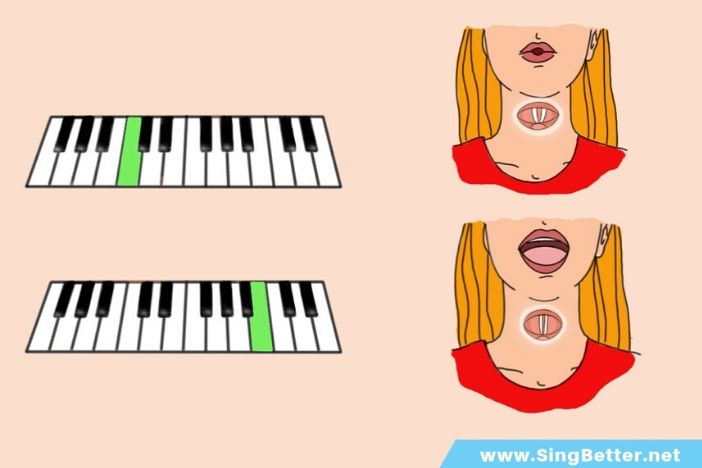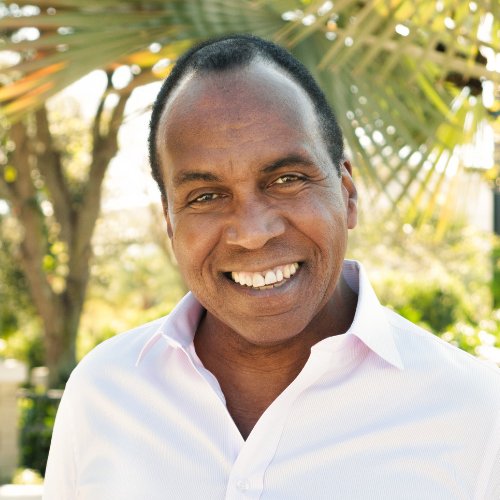The Complete Guide To Increasing Your Vocal Range
Would you like to increase your vocal range and start singing exciting high notes?
Being able to sing with more vocal range will give you many more options for the songs you can sing.
And it also gives you the ability to give the audience a thrill when you belt out that high note in the climax of the song.
Here are the 10 most important tips I’ve learned about expanding your range after 30 years of vocal training (including several huge grammy winning stars!).
Tip 1 - Don't Push Or Strain To Get Your High Notes

It can be very tempting to try and force your voice to get the high notes, but it's not the best approach.
When you are pushing your voice you're not singing with good technique. In the end it's more shouting than singing.
Best Advice?
If you are going for a high note and you feel yourself about to push to get it, immediately back off your volume. Try to get the high note in a nice relaxed manner. The rest of the tips on this page will help you with that.
Tip 2 - Learn How To Use Your Body Correctly

The most important thing to understand is that your vocal range will increase when you start using your body correctly.
Singing high notes can be counter intuitive because the popular thinking is that singing high notes is hard.
This leads singers to think they have to work hard for their high notes. They have to reach up for them. They have to use force to get their voices up there.
The truth is singing high notes is more about “allowing” your voice to go higher rather than pushing. On this page you will learn exactly why this is the case.
Starting with…
Tip 3 - Thin or Shorten Your Vocal Chords For More Vocal Range

Your voice has the capability to sing high notes by changing the way your vocal chords operate.
What happens is as you sing up your range they will "thin" or "shorten".
It's kind of like playing a guitar. When you put your fingers on the fret of a guitar, you are changing the length of the vibrating part of the string. You are making it smaller.
It's the same with your vocal chords. They get shorter and vibrate faster to get higher notes.
This is why pushing your voice isn't going to help. It's just going to move your voice box out of place, which will stop your vocal chords doing when they need to do.
Tip 4 - Use The Lip Trill Exercise

The Lip Trill exercise is a very good one if you want to extend your vocal range.
It’s a very effective exercise because it helps you balance out all the moving parts of your voice. And it helps you to practice singing in a nice relaxed manner, without forcing or straining.
There are a few key tips to using the Lip Trill correctly. Check out this video to learn how the exercise works.
Once you know how to do the Lip Trill exercise, here are some scales that are great to practise with.
Tip 5 - Start In Your Forehead And Gently Pull The Notes Down

Having correct placement is very important for singing higher notes. The perfect place to start each note is the point in the middle of your forehead.
If each time you go to sing a note, you direct your sound towards this position it will help you begin the note in a good way.
Another tip to help you to get this vocal placement is to put your hands on your cheeks as you sing.
By doing this you will get a real awareness of where your sound is positioned. And you will be able to direct your sound above your cheeks to the middle of your forehead much easier.
Tip 6 - "Think" That Your Vocal Chords Are Getting Shorter

A good tip for hitting your high notes perfectly is to do a little mental exercise.
When you are going up for a high note, just “think” to yourself that your vocal chords are getting shorter.
Building this mental picture might seem like a strange thing to do, but it really works!
The mind is powerful - and “thinking” about what you want your body to do can have a big impact over it.
Tip 7 - Relax Your Swallowing Muscles (They don't allow the vocal chords to get thin and narrow if they are tight)

Your swallowing muscles are a big culprit in terms of blocking your range. When they tighten up they interfere with your singing.
They will move your voice box around and this leads to you cutting off your air. This makes it almost impossible for you to get your high notes.
You can train yourself to keep these swallowing muscles relaxed when you are singing by putting your thumb under your chin. If you do this when you are practicing you will feel if they are tightening up as you go for your higher notes.
If this is happening (and it is very common), the awareness you get by having your thumb under your jaw will help you to relax them.
Tip 8 - Use the Nay Nay Nay exercise

Following on from the last tip, the Nay Nay Nay exercise is excellent for training your swallowing muscles to stay relaxed.
Using a nasal sounding "Nay" sound you will be able to keep your sound above your cheeks. And having your thumb under your jaw will help you to keep your swallowing muscles relaxed.
This exercise will help you get into your higher vocal range in a nice relaxed manner. It sounds a little funny, but helps train good technique into your voice.
Tip 9 - Don't Go For Power As You're Developing Your Upper Vocal Range

Once you are singing your higher notes with good technique you'll be able to get all the power you need. But in the beginning when developing your upper range, it's important to use a medium to low volume sound.
If you go for power or loudness and you're not used to singing higher notes, you will very likely push your voice.
And if you practice like this for too long it will become a habit. This will make it hard to get your high notes in a nice relaxed way.
So practice singing your high notes in a more relaxed voice. And if you feel yourself trying to push, stop what you're doing and back things off.
Tip 10 - "Pull Down" Your Higher Notes

Another useful “mental idea” is to think that you’re pulling your high notes down.
You can do this by visualising that you are beginning the note with the sound in your forehead and then pulling it down as you sing through the note.
This idea might take a little while before it takes hold, but when the penny drops it can have a remarkable effect on your voice.
The reason it works so well is it keeps everything in place. It helps you avoid the temptation to force your voice. And it makes the high note seem much easier when you’re “pulling it down” rather than singing up to it.
Tip 11- It Takes a Little Time To Increase Your Vocal Range

Practice, Patience, and Persistence has been my mantra for many years.
With singing it’s a great idea to adopt this slogan as the truth is that it can take time for your voice to develop.
Particularly if you’ve been doing something different for a long time. If you’ve been singing your high notes with a few bad habits, just know that it might take a little time to re-program your voice.
But if you’re patient with it and take one small step at a time, it will happen.
And when it does you’ll be able to sing beautiful high notes that are rich with tone. And you’ll be able to safely get all the power you need.
So practice these 11 steps and you will be well on your way to singing with a wide, exciting vocal range.
About The Author
 Roger Burnley - Vocal Coach Roger Burnley - Vocal Coach |
Roger Burnley is a vocal coach located in Hollywood, California. He has been teaching singers for over 30 years and singing for even longer than that.
Notable past and present clients include Macy Gray, Brandy, Ray J, The Beastie Boys, James Torme, Taylor Lautner, Nona Gaye, and many more.
His clients have collectively sold more than 30 million albums, with several reaching Platinum and Gold status.
Roger has been featured on VH1, TV Guide Channel, TV One,
and MTV appearing as a vocal expert.
About The Author
 Roger Burnley - Vocal Coach Roger Burnley - Vocal Coach |
Roger Burnley is a vocal coach located in Hollywood, California. He has been teaching singers for over 30 years and singing for even longer than that.
Notable past and present clients include Macy Gray, Brandy, Ray J, The Beastie Boys, James Torme, Taylor Lautner, Nona Gaye, and many more.
His clients have collectively sold more than 30 million albums, with several reaching Platinum and Gold status.
Roger has been featured on VH1, TV Guide Channel, TV One,
and MTV appearing as a vocal expert.









New! Comments
Show me you're alive! Leave a comment below...